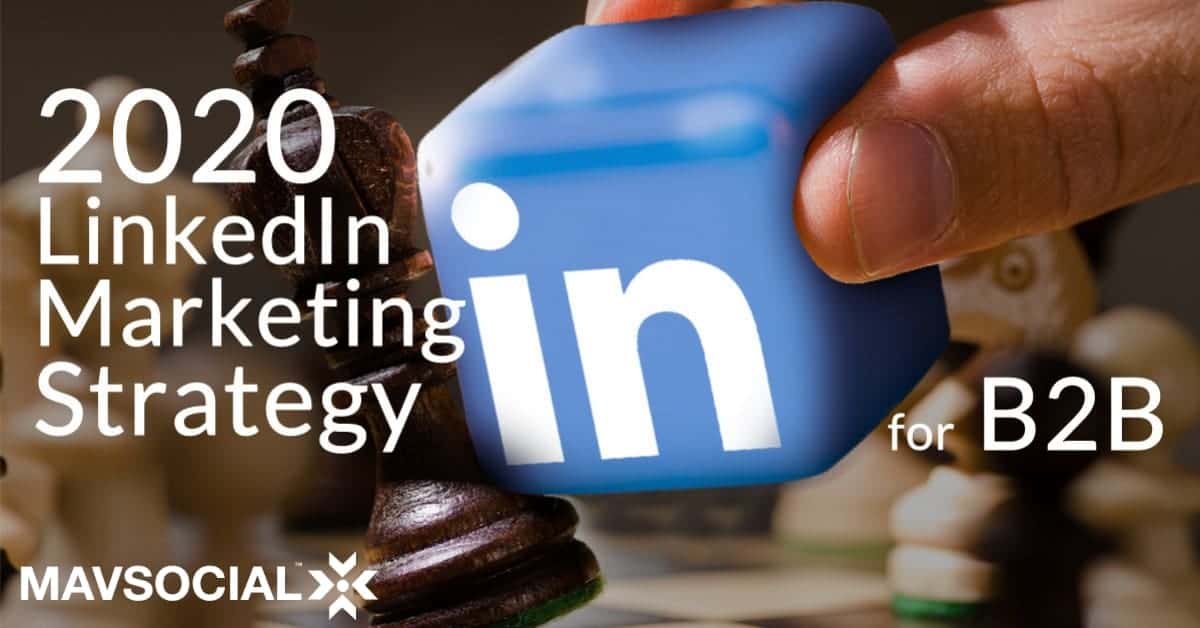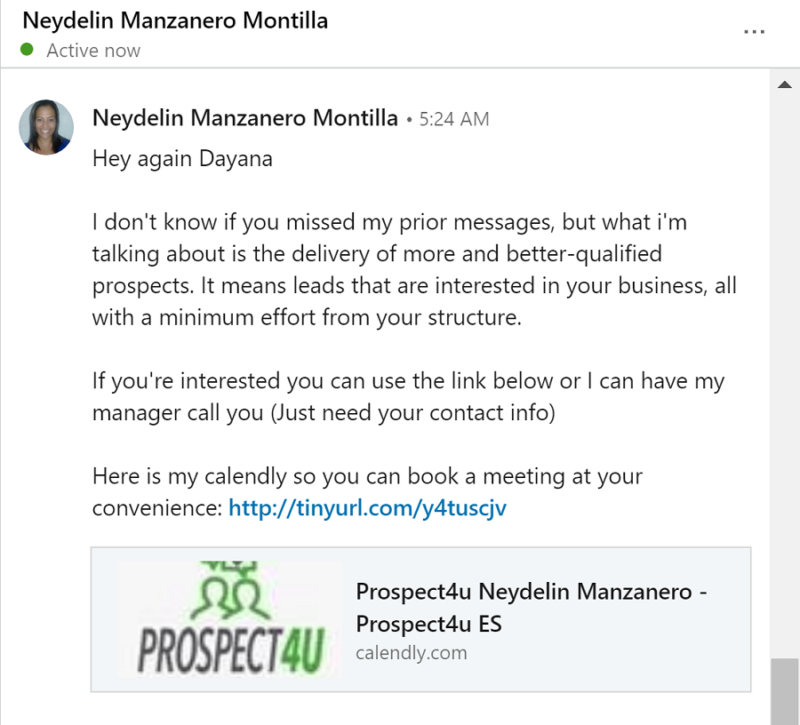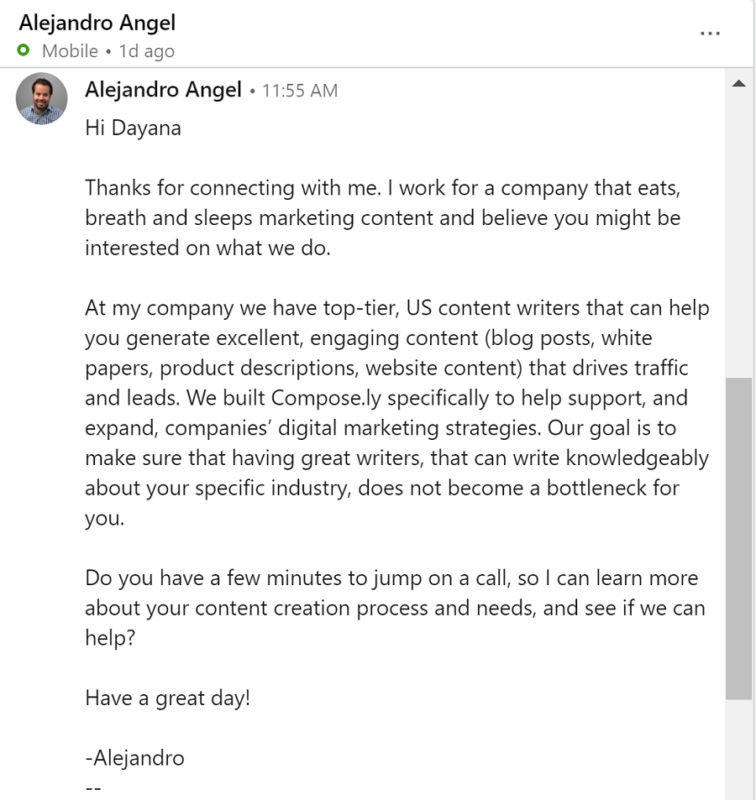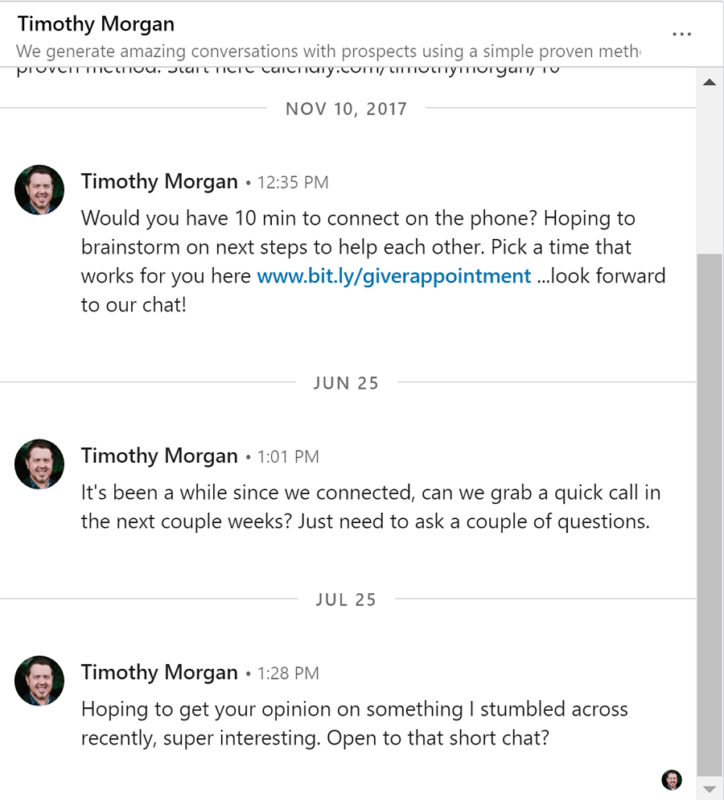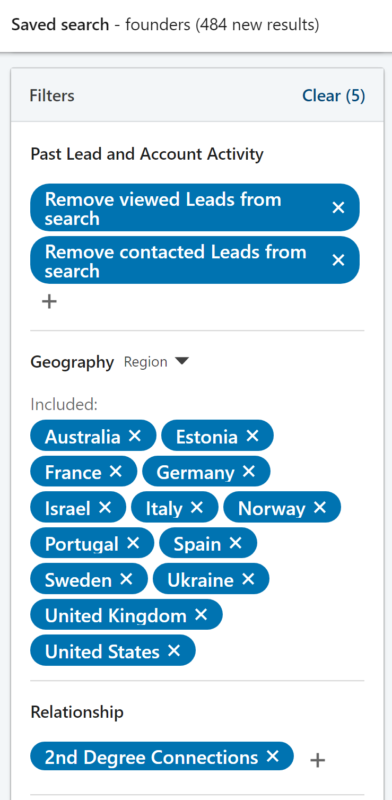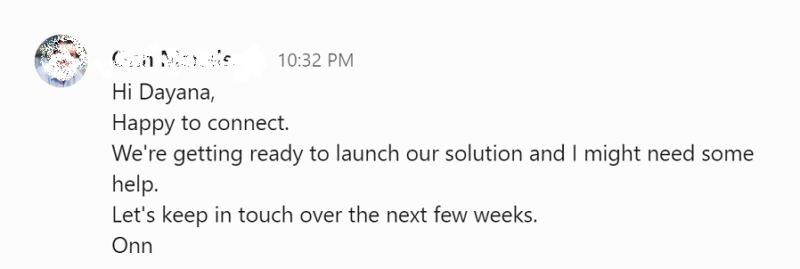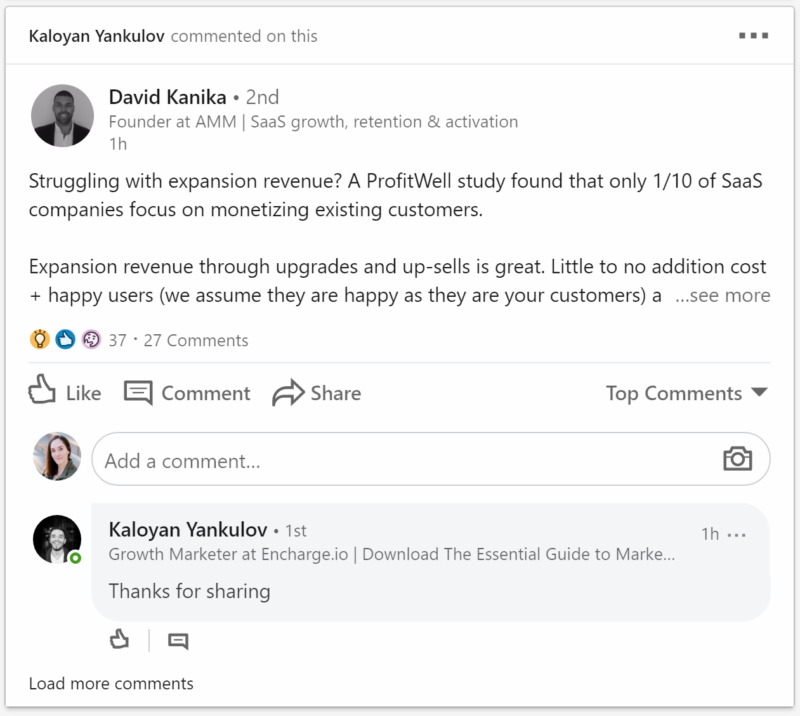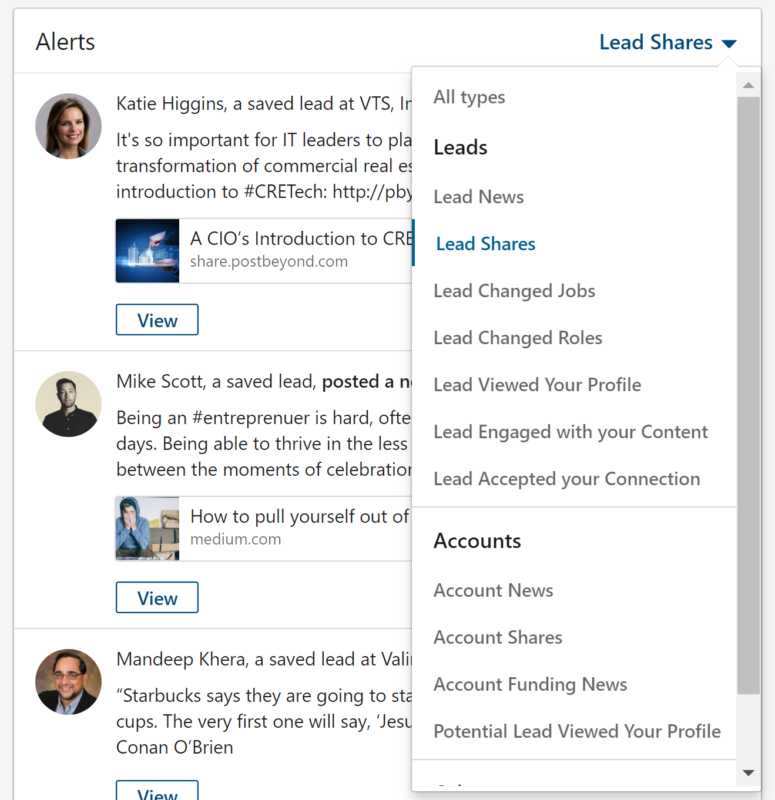Are you ready for a complete masterclass in LinkedIn marketing strategy for B2B companies? What you’re about to learn is what most LinkedIn gurus would charge anywhere from $400 – $1000 to put in a course.
So bookmark this page and get ready to take a lot of notes.
Here’s what we cover in this post:
- What doesn’t work
- The top LinkedIn marketing strategy for B2B
- How to do outbound right
- How to do inbound right
- How to combine outbound and inbound for consistent, quality results
You may also like: How to Promote Your Business on Social Media
What doesn’t work on LinkedIn anymore (possibly ever)
The weather is still warm, but 2020 is just around the corner and it’s time to up your game on LinkedIn. Maybe you’ve been trying new LinkedIn strategies. Maybe you’ve been stuck with the old way of doing things. In any case, you can do better than you’re doing now. You can use LinkedIn to generate anywhere from 5 to 30 leads per week.
But not if you’re committing major LinkedIn crimes.
Here’s what doesn’t work anymore:
- Only connecting with people you know in real life
- Ridiculously long, spammy LinkedIn messages
- Messaging people to hop on a phone call with you (for no clear reason)
- Only posting links to external content instead of creating native LinkedIn content
Sorry, but I’m putting some people on blast here and showing you some ridiculous messages.
Like this one, a long follow up about their service.
Or this one, a message I received immediately after accepting a connection request.
Or all of these messages.
I mean seriously, why would you hop on a call with someone if you have no idea what it’s about? This is so vague it’s mind-boggling.
Please don’t send messages like these. There’s a chance that you’ll get a 1% or .05% response rate, but you’re more likely to damage your reputation and your brand.
I’m going to share a much smarter way to do outbound messaging on LinkedIn and also give you the best practices for building your audience and posting content.
LinkedIn marketing strategy 2020
The smartest LinkedIn marketing strategy for B2B marketers and entrepreneurs in 2020 is this: combining outbound and inbound together.
There are a lot of people on LinkedIn who are posting content to grow their following but not using any outbound methodologies. And there are probably more people on LinkedIn who are aggressively using outbound messaging but not posting content. This is because LinkedIn is full of both salespeople and marketers. To maximize the full power of LinkedIn, you need to think like a salesperson and a marketer.
The best thing you can do to generate consistently high-quality leads in a completely non-spammy way is to do both outbound and inbound. But of course, you have to know how to do them right independently, and how to do them together in a complementary way.
Let’s start with how to do outbound right.
Outbound B2B lead generation using LinkedIn
There are essentially 4 key steps for outbound marketing with LinkedIn.
- Determine the criteria for your ideal lead
- Translate those criteria into a Sales Navigator search
- Cold connect with people who match your criteria
- Respond to messages manually after connecting
Later on, we’ll explore how outbound marketing complements inbound in LinkedIn.
1. Determine the criteria for your ideal lead
You can’t use LinkedIn to target people by age or gender. You’ll need to think about the company you’re looking to serve, and the decision-maker or the user who can champion your product to the decision-maker. What is their role or title likely to be?
Who is your target customer or client? Write out everything you know about them:
- All of the different roles and titles they might have
- The industries
- The company sizes
- The target markets
2. Translate those criteria into a Sales Navigator search
Next up, you need to load those criteria into a Sales Navigator search. (Yes, you most likely do need a Sales Navigator account to get the most out of LinkedIn, because it lets you narrow search by company size, which is essential for most B2B marketers and entrepreneurs.)
Here are the top factors you should use to build an advanced search in Sales Navigator:
- Keyword or boolean (typically used to search for the person’s job title or role)
- Past lead and account activity
- Geography
- Relationship
- Industry
- Company headcount
Seniority Level and Function are additional criteria you might use, but they may not be as reliable or useful as the ones listed above.
3. Cold connect with people who match your criteria
Not sure what to write when you cold connect? Here are a couple of very simple and effective LinkedIn outbound message templates:
Hi {FirstName}, I [service that you offer / who you help to do what]. I enjoy connecting with smart [target audience members] inside of LinkedIn.
– {YourFirstName}
Hi {FirstName}, I [service that you offer / who you help to do what]. I love growing my LinkedIn network and getting to know one another in the News Feed!
– {YourFirstName}
Here are some examples of how to write the first sentence:
- I design PDFs and marketing collateral for tech companies (service provider example)
- I help office managers save time on travel management (software company example)
- I help SMM agency owners maximize client content (software company example)
If you want to save time on sending the connection messages, you can explore whether automation might be right for your needs.
4. Respond to messages manually after connecting
Now, instead of following up with a whole bunch of spammy messages, you’ll be responding to people who respond to you.
Because you wrote what service you offer, what value you provide, and what you help people do in your connection request message, people will respond if they have a need for your offer, or if they might have a need in the future.
Here are some real responses received when using the templates above:
When you get responses after your connection message, be sure to respond straight away, and keep notes in a CRM on when to follow up. All of these responses are really valuable, so never let one fall through the cracks!
With a clear, simple message you’ll most likely get a response for every 10 – 30 messages.
Inbound LinkedIn growth marketing strategy
Even with a strong foundation of outbound marketing, using LinkedIn for inbound strategy is still really smart. Here’s why:
- Build your personal brand
- Share company content and updates
- Stay top of mind with former colleagues and clients who might refer you
- Stay top of mind with leads who accepted your connection request
To get inbound leads, you need to post content regularly, comment regularly, and optimize your profile for search
Post content that’s native to LinkedIn
I know it’s tempting to just curate content and post lots of links, but you won’t get as much visibility. The LinkedIn algorithm prioritizes content that is native, meaning it doesn’t require people to leave the LinkedIn platform to consume it.
There are lots of forms of LinkedIn native content, including text-only posts, photos, videos, and articles. Of course, keep your content on-brand and relevant to your target audience.
In this example, Finn Thormeier of Project 33 is sharing a recent side project growing Instagram accounts by turning non-fiction books into quotes.
We recommend that you post one to three times per week from your personal profile (not just your company account).
Comment on content (keep it on-brand)
Commenting is one of the easiest ways to stay top of mind with colleagues, customers, and prospects. In this example, Kaloyan Yankulov of Encharge.io only wrote “Thanks for sharing” and he’s appeared near the top of my feed.
Plan to write about eight to ten comments per week. Do a mix of long, thoughtful comments and ones that are short and sweet.
You can even comment on what leads share by saving all of your accepted outbound connection requests as leads and then searching for Lead Shares in your LinkedIn Sales Navigator newsfeed.
Optimize your profile for search
To get high-intent inbound leads, you need to optimize your profile for search. If someone types “agency owner” will you appear? I hope so!
Choose your target keyphrase and place it in your title. You can add other adjectives and details if you want, but make sure to include one target keyphrase.
The added bonus of having a clear, optimized title is that people know what you do whenever they see your content or comments in their newsfeed.
This translates directly into more inbound leads (even if you were the one who sent that person an outbound message weeks ago).
How to generate B2B leads on LinkedIn by combining outbound and inbound strategy together
Now that we’ve got a handle on outbound and inbound methods, let’s learn why we need to do both of them.
Cons of doing outbound alone
When you only do outbound methods, you’re not able to be easily discovered by people who are looking for the solution you offer.
Also, the people who you’ve reached out to and connected with will forget about you over time. So if you only do outbound with no inbound, they will likely not message you in the future. This means you have to fall back on sending spammy messages that are irrelevant to most of your leads.
Cons of doing inbound alone
When you only do inbound, you’re not able to grow an audience of targeted leads.
And if you do add new people as connections but don’t include a connection request message that clearly states what you do, then you are missing out on the opportunity to get an immediate response from someone who is interested in what you offer.
How inbound and outbound work together
When you prioritize both inbound and outbound, you:
- Show up in more searches
- Grow your audience for content
- Increase the number of inbound leads
- Get consistency with outbound leads
Essentially, what you’re doing is building up a large audience of targeted leads who will see your content each and every week. You’re also introducing yourself in a simple and friendly way with your connection request message. And, you’re increasing your chances of showing up when people are searching for what you offer, because you have a larger network and a profile that’s optimized for search.
What you’re not doing is spamming people’s inboxes or posting irrelevant content that dies a swift death in the LinkedIn algorithm.
Bringing it all together
To begin, here are the tasks we recommend:
- 10 outbound connection request messages per day
- 1 native content post per week
- 2 comments per day (on leads’ content and content you see in your main newsfeed)
- Check and respond to messages once per day
Just make sure you stay consistent. Pick your goals, and stick to them. As time goes along, you can increase these counts based on your results.
Learn more about how MavSocial can help you save time on social media marketing and maximize your content.
